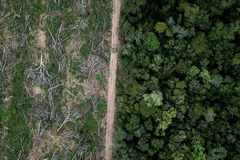Christmas food shortages? Avian flu, weather events and supply crunches crush some festive food favorites
21 Dec 2022 --- In a most turbulent year full of logistic headaches, unexpected externalities such as the La Niña storm in Australia or a global decimating avian flu, has limited some shoppers’ choices. Furthermore, red hot demand for certain products, while maybe expected, has still caused some supply issues in items where rapid production increases might not be possible.
However, consumers will still be able to buy the vast majority of seasonal products, albeit at higher prices. In the case of turkey, supply will be guaranteed; however, buyers will have to opt for smaller birds as larger ones might be impossible to find due to the avian flu spreading across continents.
La Niña eats dim sums and potatoes
Australian consumers will be some of the most affected by food shortages due to floods caused by bad weather.
For those who eat Chinese food for Christmas they might not be able to find popular dim sums. Marathon Foods announced that due to Melbourne floods, consumers might be unable to find supply of their dim sums, spring rolls and puffy dogs.
The country is facing a potato and cabbage shortage, leading to a lack of potato chips and hot chips in stores. Prices have also been affected, leading to increases of 30-40% for suppliers, according to the Australian Hotels Association (AHA).

 Consumers will be able to purchase turkeys this Christmas, but they will need to face higher costs and opt for smaller birds.“The increase in the price of potatoes puts more financial pressure on pubs already facing increased costs including power, beer, drinks over the bar, transport and employees costs,” says David Canny, president of the AHA.
Consumers will be able to purchase turkeys this Christmas, but they will need to face higher costs and opt for smaller birds.“The increase in the price of potatoes puts more financial pressure on pubs already facing increased costs including power, beer, drinks over the bar, transport and employees costs,” says David Canny, president of the AHA.
“As the La Niña rains continue on the eastern seaboard, we may see a delayed start to the season for some fresh fruits and vegetables, including cherries and stone fruits,” explains Brad Banducci, chief executive of Woolworths.
“In many ways, Christmas remains a rare constant after another uncertain year, with Covid, floods, other natural disasters and of course the growing pressures on the cost of living,” he highlights.
Banducci says that consumers could opt for mangos, which are having a good season. Avocados, while not a classical Christmas food, are also a dirt-cheap alternative in Australia due to a bumper year. Even with avocado experts going up 350% in the country in 2021, producers are having trouble at the time of getting rid of the oversupplied and overproduced product.
Luxury products such as oysters and champagne also have a complex season in Australia. The QX disease has killed 100% of oysters in some coastal areas in the country. Meanwhile, popular champagne brands are running out of product due to high demand.
Worst avian flu epidemic
The ongoing avian flu has killed over 100 million birds in Europe and the UK (over 50 million) and the US (57.53 million), according to data from the European Center for Disease Control and the US Centers for Disease control. Globally, the World Organization for Animal Health puts the number of lost birds at 138 million, more than the last five years combined.
The costs in compensation have summed US$570 million in the US alone, according to the US department of agriculture, with a similar number expected in Europe.
In the UK, the Department for Environment, Food & Rural Affairs has paid over £2.48 (US$3.01 million).
Christine Middlemiss, UK chief veterinary officer, expects the number of cases of avian flu to keep growing in the coming months. More cautiously, the USDA states that it is not possible to predict what will happen in the following months, “we believe it’s important for people to plan for an elevated risk [of avian flu spread].”
The epidemic has led to skyrocketing turkey prices, with other commodities and products like eggs and foie gras – which consumption increases during festivities – being affected.  Australia is facing a potato and cabbage shortage, leading to a lack of potato chips and hot chips in stores.
Australia is facing a potato and cabbage shortage, leading to a lack of potato chips and hot chips in stores.
In the UK, egg rationing is expected to go into 2023.
Foie gras shortage
As we advance through this 2020 decade, we find more similarities with the excess of the “années folles,” or “crazy years,” that the 1920s were. Industry is comparing the depletion of high-end champagne bottles to the roaring 20s; furthermore, caviar sales are booming.
With high-end champagne joining the list of products facing a shortage, another luxury item like foie gras is also increasingly difficult to find.
While consumers are mindful overall of their expenses, during Christmas, they might fall for revenge spending habits, one of Innova Market Insights Top Ten Trends.
Revenge Spending is how consumers are urged to spend money now, even in strained economic times – partly to compensate for lost opportunities during the pandemic. With shoppers seeking these experiences from time to time, they opt for saving money on regular days.
One such expense might be the seasonal shopping of foie gras. According to CIFOG (the Comité Interprofessionnel du Foie Gras), nine in 10 French consumers say they consume the delicacy.
However, the product will not be fully supplied this year as production is down 30-35% due to the avian flu epidemic and stocks having been depleted last year, according to CFIG. According to the Comite, the product will also be more expensive as production costs have gone up 30%. CIFOG doesn’t expect the situation to normalize until at least the second half of 2023.
Moreover, French customers will continue to find limits in mustard shopping as supermarkets continue to apply a “one bottle per customer limit”.
By Marc Cervera






.png)






